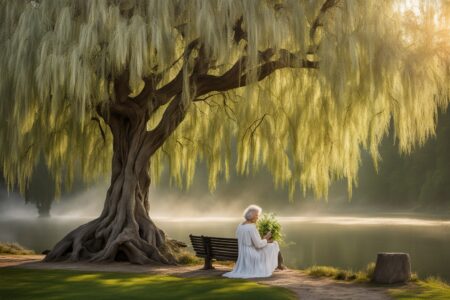Cultivating Serenity: Gardening Tips for Seniors
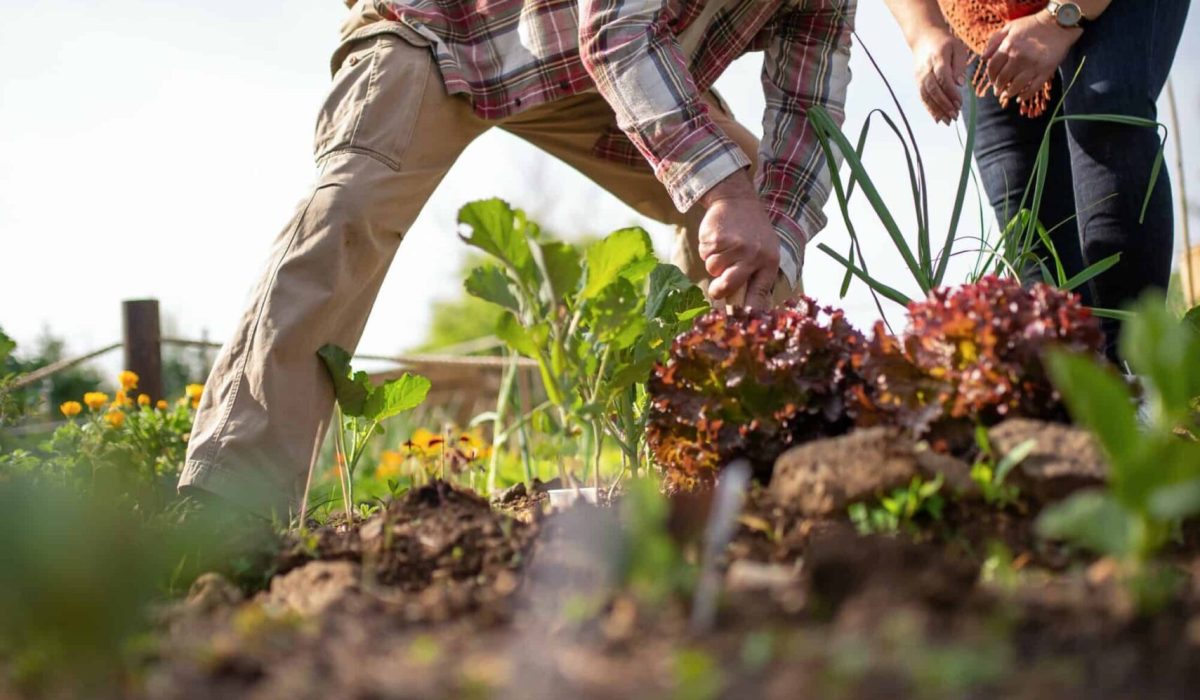
As we embark on the golden years of retirement, the pursuit of tranquility often leads many to the garden—a sanctuary where time slows down, and nature’s rhythms dance to a soothing tune. Gardening, a beloved pastime for many Australians, is not only a source of great joy but also a way to maintain an active lifestyle. However, as we age, the physical demands of maintaining a lush garden can seem daunting. Fear not, for ‘Cultivating Serenity: Gardening Tips for Seniors’ is designed to provide you with valuable insights on how to turn gardening into a leisurely and rewarding activity once again.
Whether you’re a seasoned green thumb or just beginning to dip your toes into the fertile soil of your backyard, this blog post will share strategies to optimise your gardening experience. We’ll delve into practical advice on how to streamline your gardening efforts, choosing the right tools that reduce strain, and selecting plants that align with your changing lifestyle and mobility. Our aim is to help you foster a connection with the earth, cultivate your well-being, and harvest the serenity that comes from tending to a garden. Let’s unearth the joys of gardening together, creating a space that flourishes with the wisdom of your years.
CONTENT
Embracing Gardening in Your Golden Years
For many seniors, retirement opens up the possibility for a more leisurely and fulfilling lifestyle, and gardening is an activity that can bring immense joy and purpose to this new chapter. Embracing gardening in your golden years allows you to reconnect with the natural world, exercise a nurturing touch, and witness the fruits of your labor as your garden flourishes. It’s an opportunity to immerse yourself in the serene beauty of nature and revel in the therapeutic benefits that come with it.
Gardening also provides a sense of structure and routine, which can be particularly comforting for retirees adapting to newfound leisure time. Planning and cultivating a garden can imbue a sense of purpose, helping to combat feelings of isolation and idleness. It’s a wonderful way to stay active and engaged, all while relishing the tranquility of the outdoors. Whether it’s tending to a small herb garden on the balcony or managing a larger plot in the backyard, gardening offers a sense of accomplishment and joy that is ageless.
As we age, our surroundings take on a greater significance in maintaining a fulfilling lifestyle. Embracing gardening in your golden years not only enhances the aesthetic appeal of your environment, but also fosters a deeper connection with the natural world. Through gardening, seniors can cultivate peace, joy, and a renewed sense of purpose. It’s an enriching pursuit that can fill your days with wonder and contentment, making every moment spent outdoors a delightful retreat.
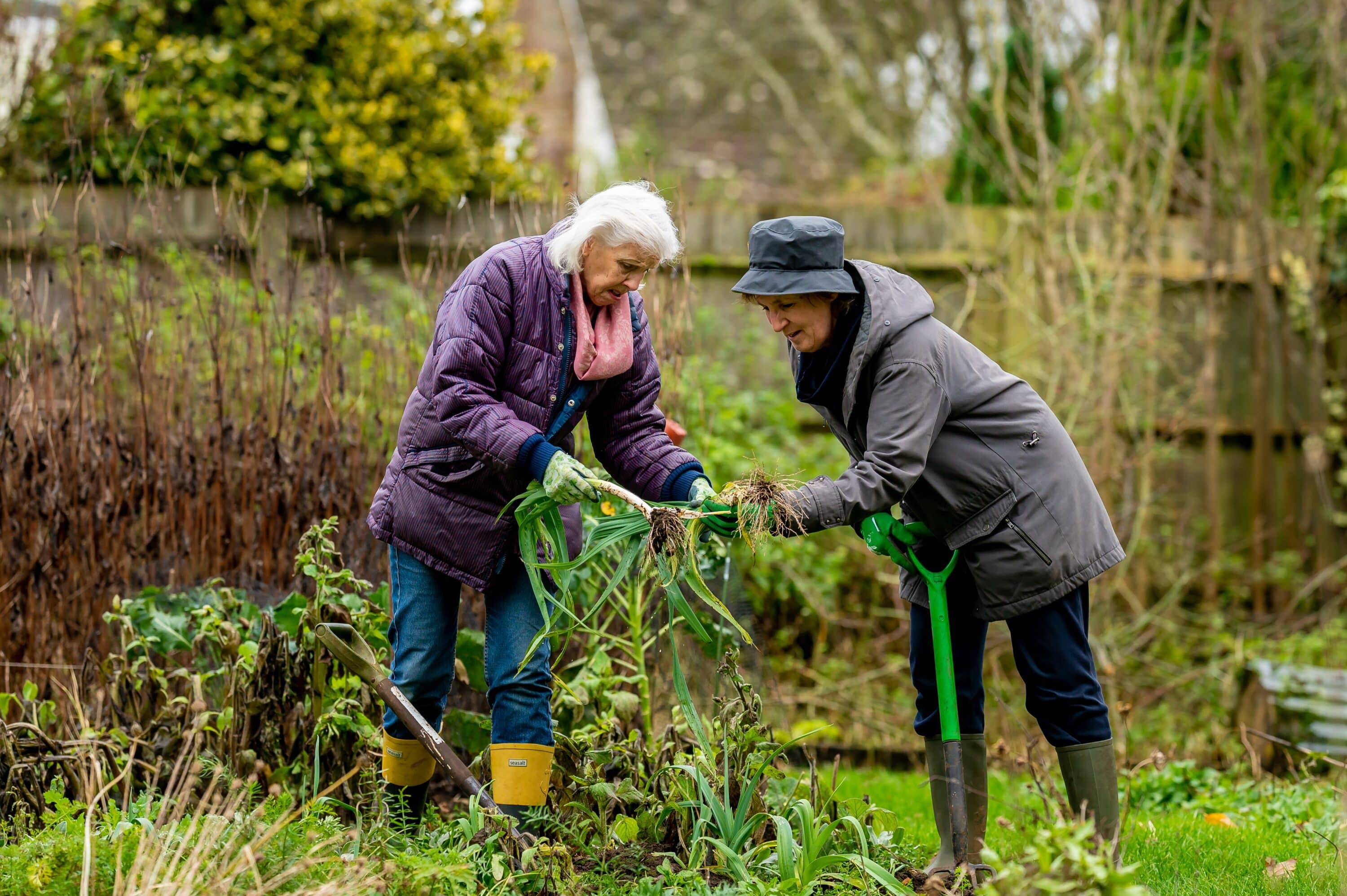
The Therapeutic Benefits of Gardening for Seniors
Gardening offers a myriad of therapeutic benefits for seniors, making it an invaluable activity for promoting overall well-being. Engaging in gardening activities can reduce stress, anxiety, and depression, while instilling a sense of calm and contentment. The act of nurturing plants, observing their growth, and creating a beautiful outdoor space provides a soothing and meditative experience, offering respite from the demands of everyday life. For seniors, especially those in retirement, gardening can serve as a powerful tool for maintaining emotional and mental health.
The physical aspects of gardening also contribute to its therapeutic nature for seniors. Tending to a garden involves gentle exercise, from planting and weeding to watering and harvesting. These activities can help seniors maintain mobility, strength, and flexibility, contributing to improved physical health and vitality. Additionally, exposure to natural sunlight and fresh air while gardening can have positive effects on mood and energy levels, promoting a sense of vitality and overall wellness.
Furthermore, the sense of accomplishment that comes with nurturing and caring for a garden can provide a significant mental boost for seniors. The ability to witness the growth and transformation of plants, as well as the creation of a beautiful outdoor space, instills a deep sense of pride and satisfaction. This can be particularly meaningful for retirees seeking purpose and fulfillment in their daily lives, reinforcing feelings of competence, creativity, and resilience. In essence, the therapeutic benefits of gardening for seniors extend beyond the physical and mental realms, encompassing a profound sense of purpose and satisfaction.
Tailoring Your Garden to Suit Senior Needs
Tailoring a garden to suit the needs of seniors involves thoughtful planning and consideration of various factors to ensure a safe, comfortable, and enjoyable gardening experience. One of the key aspects is the layout and design of the garden, with an emphasis on creating accessible pathways and designated areas for planting, maintenance, and relaxation. By incorporating raised garden beds, vertical gardening options, and wider pathways, seniors can navigate the garden space with ease, reducing the risk of strain and discomfort.
Choosing the right plants for the garden is another crucial aspect of tailoring the space to suit senior needs. Opting for low-maintenance plants that require minimal care and attention can help alleviate the physical burden of gardening, allowing seniors to enjoy their garden without feeling overwhelmed by upkeep. Additionally, selecting plants that provide sensory stimulation, such as fragrant flowers and textured foliage, can enhance the overall gardening experience, appealing to the senses and creating an immersive and therapeutic environment.
Incorporating appropriate seating and resting areas within the garden is essential for seniors to take breaks and enjoy the fruits of their labor. Comfortable seating options strategically placed throughout the garden provide opportunities for relaxation, observation, and contemplation. Whether it’s a cozy bench nestled amid the greenery or a shaded retreat to escape the sun, these designated spaces enhance the overall appeal of the garden and encourage seniors to spend more time outdoors, fostering a deeper connection with nature.
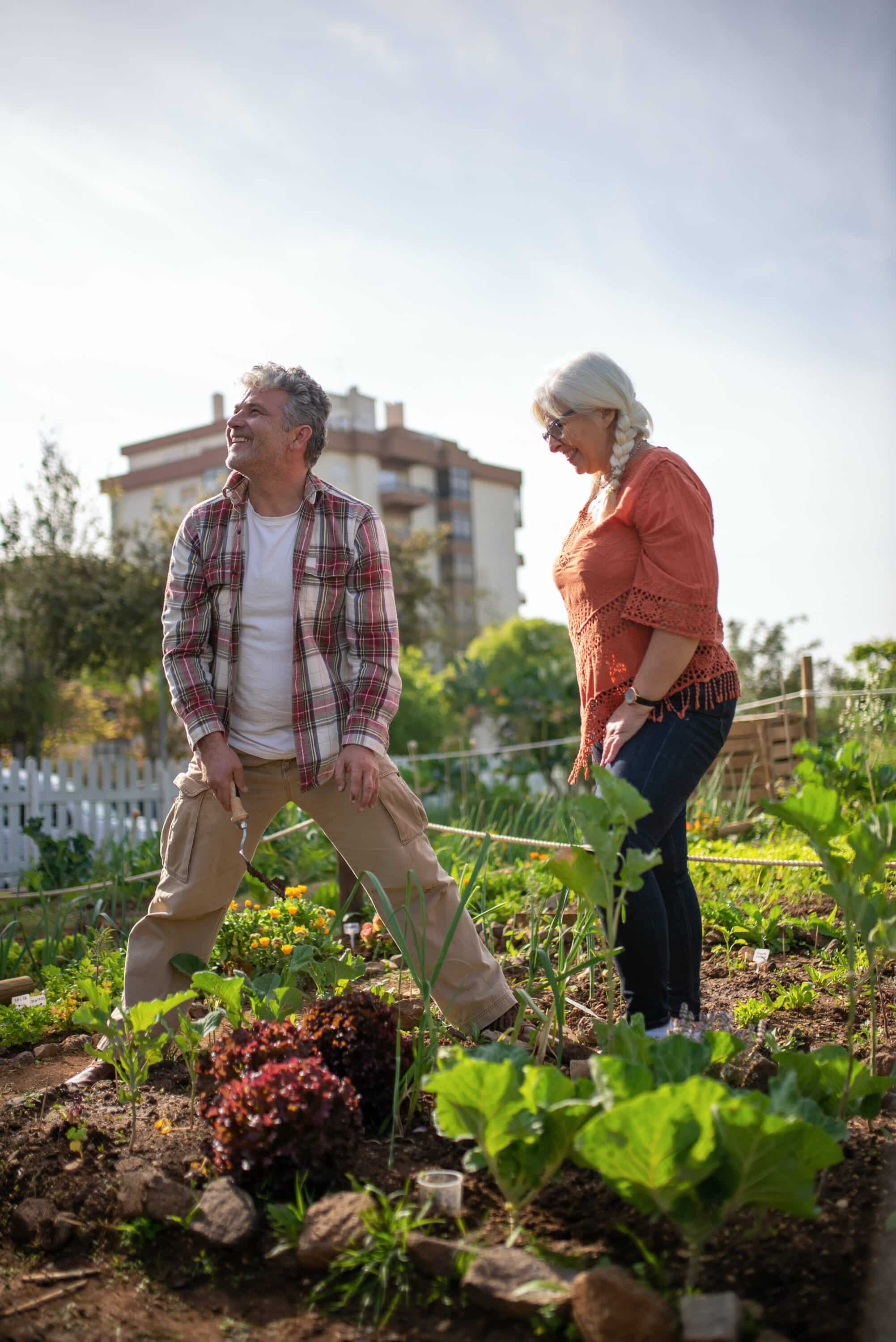
The Best Low-Maintenance Plants for Retirees
When it comes to gardening for retirees, opting for low-maintenance plants is a wise choice to ensure a flourishing garden without the need for excessive upkeep. Selecting plants that require minimal watering, pruning, and fertilizing can ease the gardening workload and provide retirees with a garden that is both pleasing to the eye and undemanding. A variety of perennial plants, such as lavender, ornamental grasses, and succulents, are excellent choices for retirees, as they require minimal care once established and offer long-lasting beauty throughout the seasons.
Furthermore, incorporating native plants into the garden can be advantageous for retirees, as these plants are well-adapted to the local climate and soil conditions, reducing the need for intensive maintenance. Native plants also attract local wildlife, such as birds and butterflies, creating a vibrant and biodiverse garden ecosystem that requires minimal human intervention. By embracing the natural beauty of the local environment, retirees can enjoy a garden that thrives with minimal effort, allowing them to relish the tranquility and beauty of their outdoor space.
To add vibrant pops of color to the garden, retirees can consider planting low-maintenance flowering shrubs, such as hydrangeas, rosemary, and butterfly bushes. These plants not only provide striking visual appeal but also require little pruning and upkeep, making them ideal choices for retirees who seek a vibrant and dynamic garden without the ongoing maintenance demands. By incorporating these low-maintenance plants into the garden, retirees can create a visually stunning and rewarding outdoor space that enhances their overall gardening experience.
Essential Ergonomic Gardening Tools for Less Strain
As retirees embrace the joys of gardening, it becomes essential to equip themselves with ergonomic gardening tools designed to minimize strain and maximize comfort. Ergonomic tools are specially crafted to reduce the physical effort required for gardening tasks, making them ideal for seniors seeking to maintain an active and enjoyable gardening experience. One of the key ergonomic tools is the kneeler and seat combination, which provides a supportive platform for kneeling while also offering the option to sit during gardening activities. This versatile tool promotes proper posture, reduces strain on the knees and back, and enables seniors to comfortably carry out a range of gardening tasks.
In addition to seating options, lightweight and ergonomic hand tools, such as trowels, pruners, and weeding tools, play a crucial role in alleviating strain during gardening. These tools are specifically designed to fit comfortably in the hand, reducing wrist and hand fatigue while providing the necessary leverage for various gardening activities. Retirees can also benefit from long-handled tools, such as rakes and hoes, which minimize the need to bend or stoop while tending to the garden, thereby reducing strain on the back and joints.
Furthermore, investing in tools with cushioned handles and adjustable features can significantly enhance the overall gardening experience for seniors. Cushioned handles provide a comfortable grip and help reduce hand and wrist strain, while adjustable tools, such as telescopic pruners and shears, enable seniors to customize the tools to their preferred height and reach. By incorporating these essential ergonomic gardening tools into their gardening routine, retirees can cultivate their gardens with ease and enjoyment, fostering a greater sense of well-being and satisfaction.
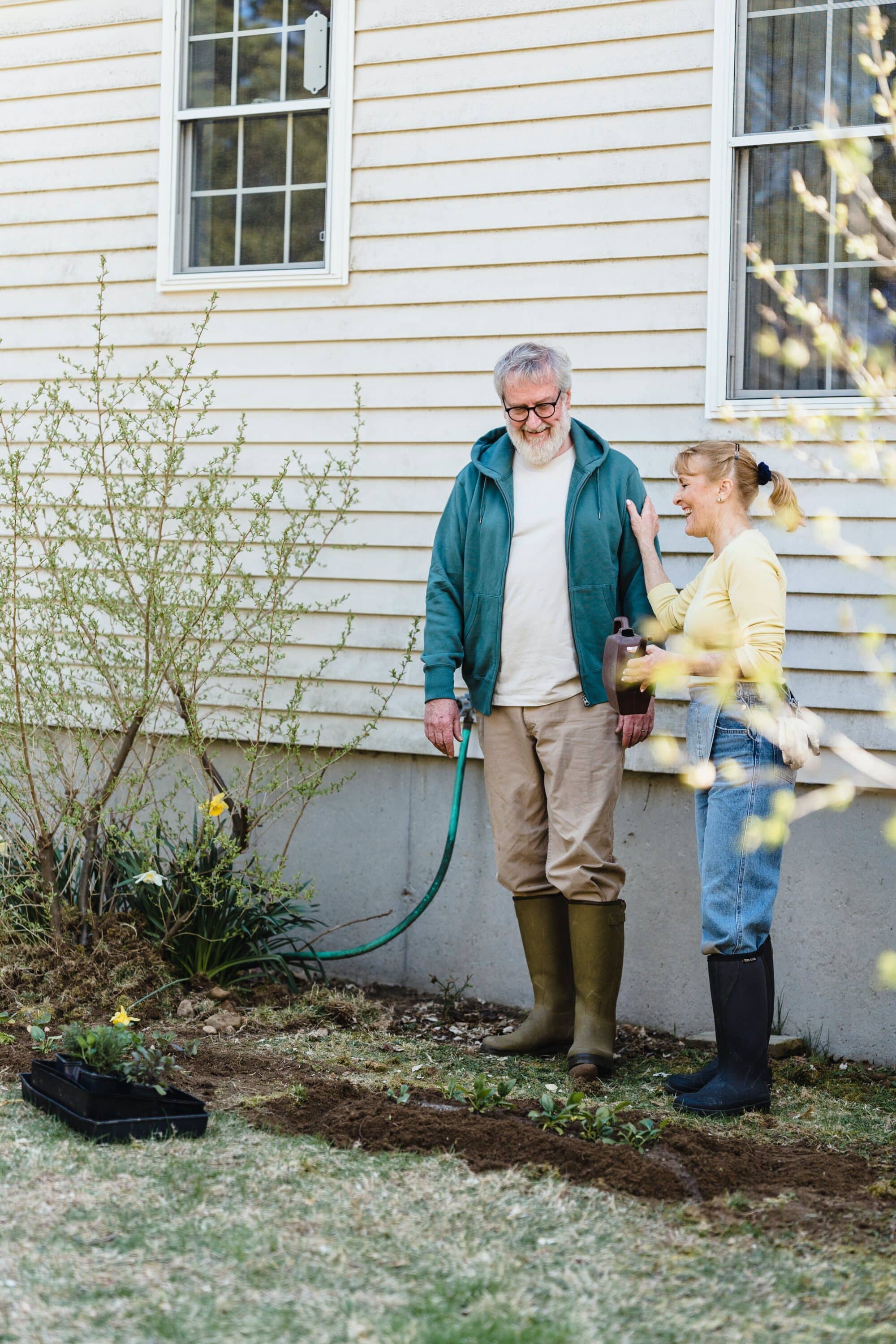
Creating Accessible Garden Spaces and Pathways
Creating a garden with accessible spaces and pathways is essential for ensuring that retirees can move around and tend to their garden comfortably and safely. To achieve this, it’s important to design wide and smooth pathways that allow for easy navigation with mobility aids such as walkers or wheelchairs. Paths made of compacted gravel or smooth paving materials provide stable surfaces that are conducive to easy movement, ensuring that retirees can explore and tend to all areas of the garden without encountering obstacles or uneven terrain.
Integrating raised garden beds and containers into the garden design is another effective method of creating an accessible gardening space. Raised beds bring planting areas to a convenient height, reducing the need for bending or kneeling while gardening. They also provide a clear and accessible workspace for retirees, allowing them to engage in plant care, propagation, and harvesting with minimal physical strain. Likewise, utilizing containers and hanging baskets for cultivating plants adds versatility to the garden, enabling retirees to tend to their favorite plants and flowers without the need to navigate challenging terrain.
In addition to pathway design and raised beds, incorporating seating areas strategically throughout the garden offers resting spots and encourages seniors to spend more time enjoying their outdoor space. Comfortable benches, shaded retreats, and garden nooks provide opportunities for relaxation and contemplation, enhancing the experience of spending time in the garden. By creating accessible garden spaces and pathways, retirees can cultivate a garden that is both functional and inviting, allowing for seamless and enjoyable engagement with their green oasis.
Planning Your Garden for Year-Round Enjoyment
Planning a garden for year-round enjoyment is a rewarding endeavor, allowing retirees to relish the beauty of their outdoor space in every season. To achieve this, it’s essential to incorporate a diverse selection of plants that offer visual interest, color, and fragrance throughout the year. By including a mix of evergreen shrubs, flowering perennials, and seasonal bulbs, retirees can ensure that their garden remains vibrant and appealing regardless of the season, creating an ever-changing tapestry of natural beauty.
Strategic planting and garden design play a critical role in achieving year-round enjoyment. Grouping plants with varying bloom times and foliage textures ensures that the garden remains visually captivating throughout the year. Additionally, integrating elements such as ornamental grasses, architectural plants, and flowering trees enhances the garden’s appeal and provides a dynamic landscape that evolves with the seasons. By planning for a mix of plants that bloom in different seasons, retirees can create a garden that offers a continuous display of colors and textures, fostering an enduring connection with nature.
Incorporating elements such as bird feeders, birdbaths, and nesting boxes can further enhance the garden experience, attracting local wildlife and creating a lively and dynamic garden ecosystem. Observing visiting birds, butterflies, and pollinators adds a delightful dimension to the garden, providing retirees with year-round entertainment and joy. Additionally, dedicating a section of the garden to winter-interest plants, such as berries and ornamental grasses, ensures that the garden remains captivating during the colder months, adding depth and character to the outdoor space. By planning the garden for year-round enjoyment, retirees can revel in the ever-changing beauty of their garden, fostering a deep and enduring connection with nature.
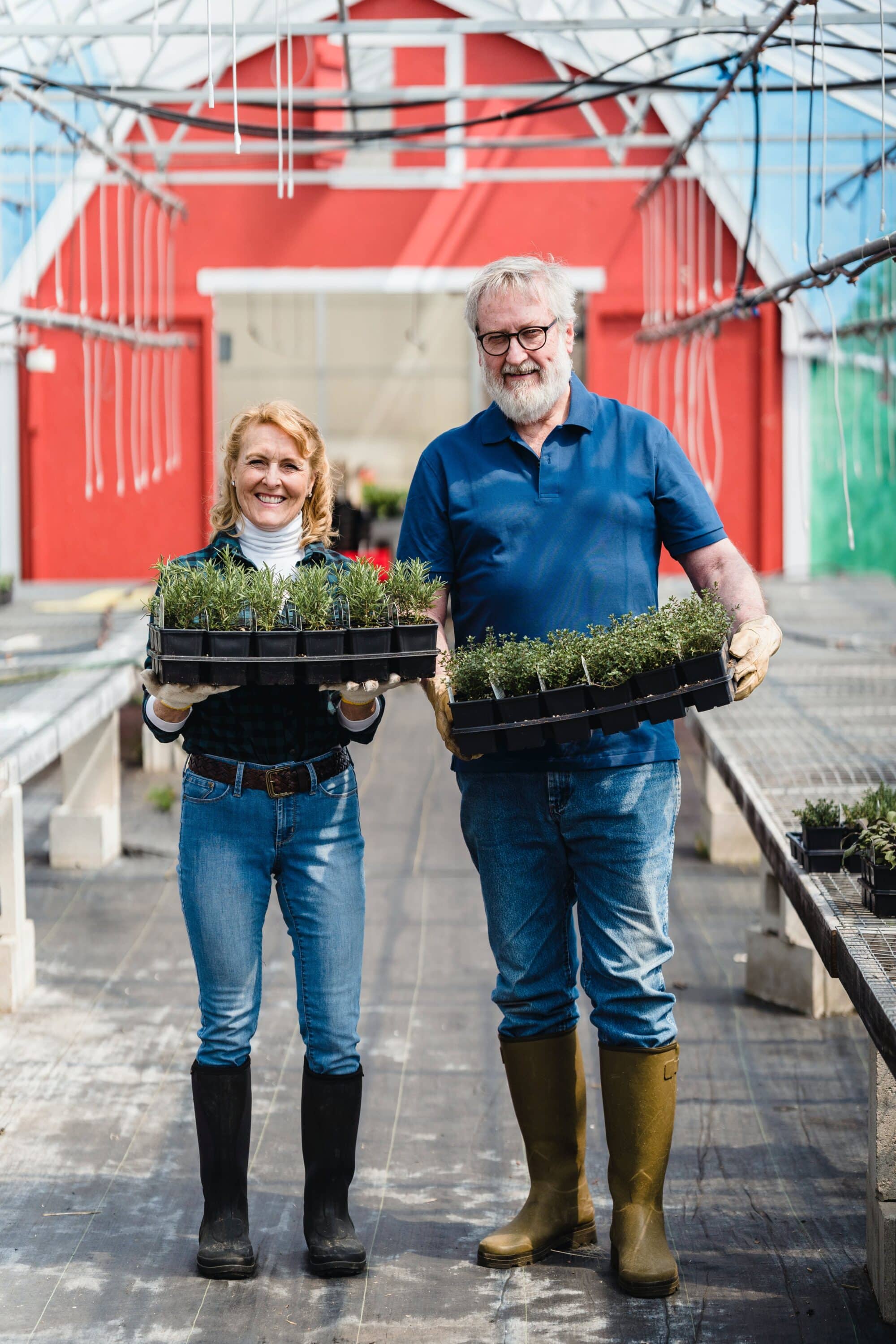
Mastering the Art of Container Gardening
Container gardening offers retirees a versatile and accessible way to cultivate plants and flowers, allowing them to enjoy the rewards of gardening regardless of their living situation. By mastering the art of container gardening, retirees can bring the beauty of nature to patios, balconies, and other small outdoor spaces, creating vibrant and thriving mini-gardens. Containers come in a variety of shapes, sizes, and materials, providing endless opportunities for creativity and personal expression in gardening. They can be strategically placed to add color and texture to outdoor areas, providing visual interest and a sense of natural beauty.
One of the key benefits of container gardening is the ability to control soil quality and composition, offering retirees the opportunity to create optimal growing conditions for their plants. Retirees can choose lightweight potting mixes tailored to the specific needs of their plants, ensuring proper drainage and aeration to promote healthy root growth. Additionally, the portability of containers allows retirees to adjust the placement of their plants to optimize sun exposure and environmental conditions, resulting in successful growth and blooming.
Furthermore, the versatility of container gardening enables retirees to experiment with a wide range of plants, including ornamental flowers, herbs, and even small fruit and vegetable varieties. Compact and dwarf varieties are well-suited for container gardening, providing retirees with the opportunity to cultivate a diverse and rewarding collection of plants in a limited space. By mastering the art of container gardening, retirees can transform their outdoor living areas into lush and inviting retreats, nurturing a deep connection with nature and the joy of gardening.
Incorporating Permaculture Principles for Sustainability
Incorporating permaculture principles into the garden is a holistic approach that promotes sustainability, harmony with nature, and the creation of resilient and productive outdoor spaces. By implementing permaculture principles, retirees can design and cultivate their gardens to function as self-sustaining ecosystems, reducing waste, conserving resources, and fostering biodiversity. One of the key permaculture principles is “observe and interact,” encouraging gardeners to closely observe and understand their garden’s natural patterns and processes, thereby enabling them to make informed and sustainable decisions in its management.
Another important aspect of permaculture gardening is the utilization of companion planting, which involves growing mutually beneficial plant combinations that support healthy growth and pest management. By strategically planting compatible species that work in synergy, retirees can create garden ecosystems that enhance soil fertility, deter pests, and promote natural balance and resilience. This approach minimizes the need for chemical pesticides and fertilizers, aligning with the principles of ecological harmony and sustainability.
Additionally, embracing permaculture principles such as water conservation, soil regeneration, and organic waste management contributes to the creation of sustainable and low-maintenance gardens. Techniques such as mulching, rainwater collection, and composting reduce water usage, enhance soil health, and minimize organic waste, promoting a closed-loop system that supports the long-term vitality of the garden. By incorporating permaculture principles for sustainability, retirees can cultivate gardens that are not only beautiful and bountiful but also environmentally conscious and deeply connected to the natural world.
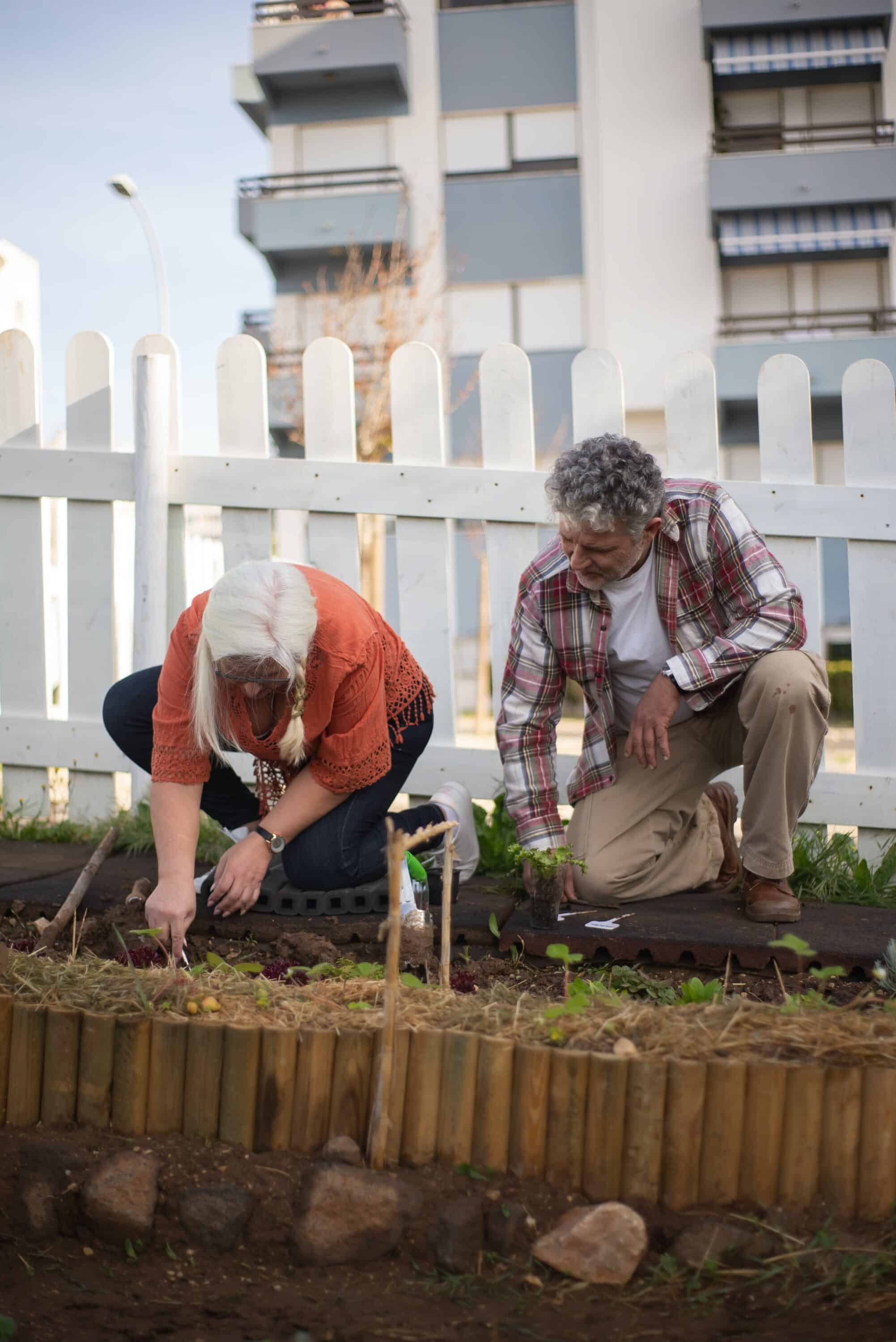
Staying Safe While Gardening: Tips for Seniors
When it comes to gardening, safety is paramount, especially for seniors. By implementing a few key tips, retirees can ensure that their gardening activities are not only enjoyable but also safe and comfortable. It’s important to start with proper warm-up exercises to prepare the body for physical activity. Gentle stretches and warm-up movements can help loosen muscles and joints, reducing the risk of strain or injury during gardening tasks.
Furthermore, seniors should prioritize the use of supportive footwear, appropriate clothing, and sun protection while gardening. Sturdy, closed-toe shoes with good traction can provide stability and reduce the risk of slips and falls, while lightweight, breathable clothing and wide-brimmed hats offer protection from the sun’s rays. Additionally, applying sunscreen and staying hydrated are essential elements of safe gardening for seniors, ensuring that they can enjoy their time outdoors without the risk of sunburn or dehydration.
Incorporating resting and hydration breaks into the gardening routine is crucial for supporting overall well-being and preventing fatigue. Taking regular breaks to rest, hydrate, and assess comfort levels can help seniors gauge their energy and avoid overexertion. Furthermore, knowing one’s physical limits and seeking assistance for heavier or more strenuous tasks can prevent injuries and ensure that gardening remains a safe and enjoyable activity for retirees. By prioritizing safety measures, seniors can revel in the joys of gardening while minimizing the risk of accidents or strain, allowing them to cultivate and enjoy their gardens with confidence and peace of mind.
Community Gardening: Sharing the Joy with Peers
Community gardening offers retirees a wonderful opportunity to share their love of gardening with peers, fostering social connections, and creating vibrant and thriving garden spaces. Engaging in community gardening projects allows retirees to come together with like-minded individuals, share gardening knowledge, and collaborate on cultivating beautiful and sustainable gardens. Whether it’s a community garden plot, a shared rooftop garden, or a gardening club, the experience of gardening in a communal setting provides a joyful and enriching opportunity for retirees to bond with fellow gardeners.
Participating in community gardening provides retirees with opportunities for learning, mentorship, and skill-sharing, contributing to a rich and educational gardening experience. Through interactions with fellow gardeners, retirees can gain valuable insights, exchange gardening tips and techniques, and learn about new plant varieties and cultivation methods. This collaborative environment creates a supportive and nurturing space where seniors can expand their gardening skills and knowledge, fostering a sense of camaraderie and mutual growth within the gardening community.
Furthermore, community gardening initiatives promote a sense of shared responsibility and stewardship of the environment, allowing retirees to contribute to the creation of sustainable and eco-friendly garden spaces. By working together to design and maintain community gardens, retirees can actively participate in environmental preservation, biodiversity conservation, and the promotion of green spaces within their local communities. Engaging in collaborative efforts to create and maintain community gardens not only benefits the environment but also reinforces the social bonds and collective pride of retirees in their gardening accomplishments, fostering a sense of purpose and accomplishment.
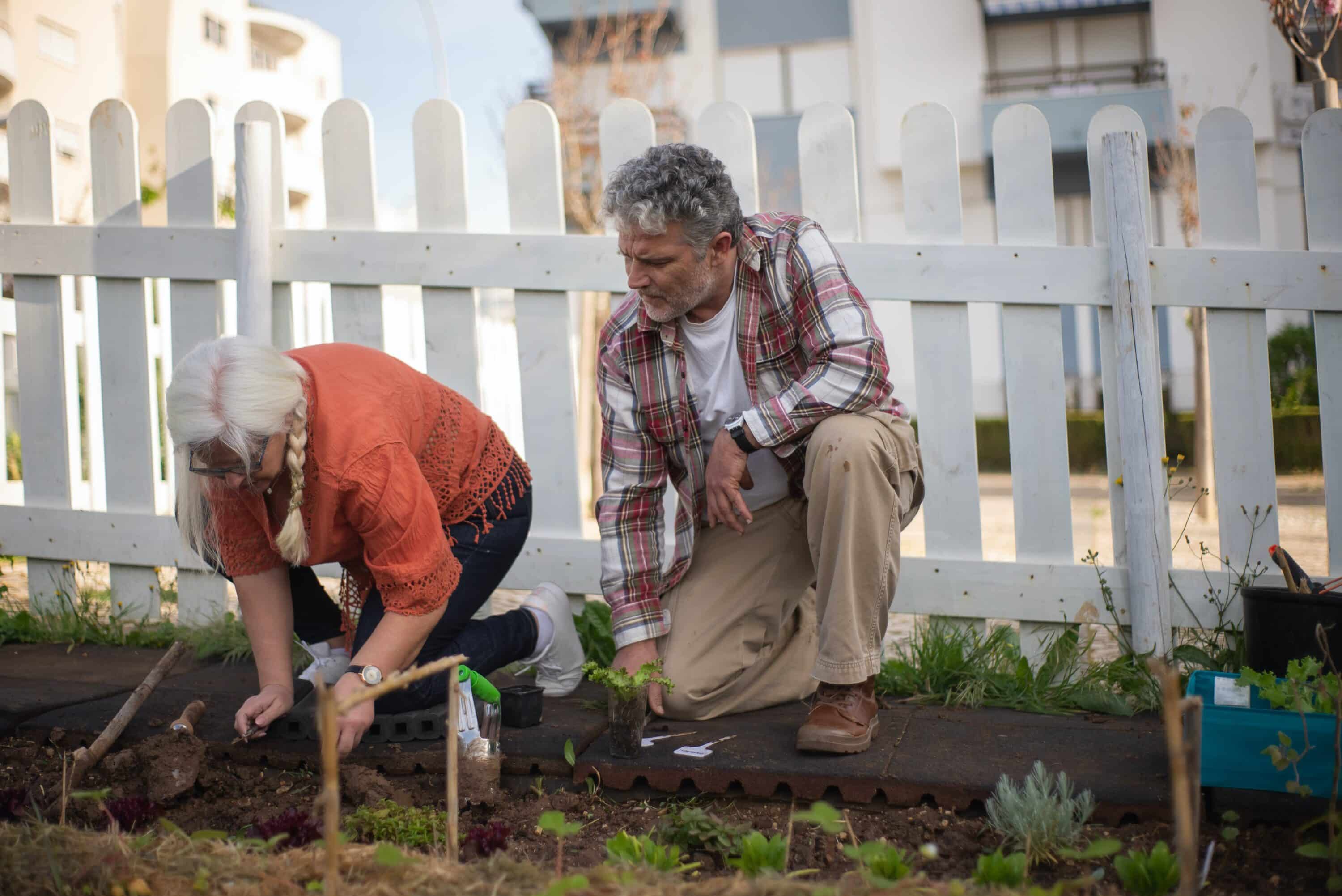
Gardening as a Legacy: Tips for Involving Grandchildren
Involving grandchildren in gardening activities can be a delightful and rewarding experience for retirees, providing an opportunity to share the joys of nature, instill valuable life skills, and create lasting memories. Teaching grandchildren about gardening fosters a connection with the natural world, inspiring an appreciation for the environment and the process of nurturing living plants. It’s a chance to impart knowledge about plant growth, the importance of sustainable practices, and the wonders of the outdoors, nurturing an enduring love for gardening from one generation to the next.
Engaging grandchildren in age-appropriate gardening tasks, such as planting seeds, watering plants, and harvesting fruits and vegetables, offers valuable opportunities for learning and bonding. By involving grandchildren in the gardening process, retirees can impart important life skills, foster a sense of responsibility, and encourage a love for gardening and the outdoors. These shared experiences create cherished memories, providing grandchildren with a sense of accomplishment and teaching them the value of patience and nurturing, all while creating a lasting legacy of gardening traditions.
Moreover, establishing a designated gardening area for grandchildren, such as a small raised bed or a section of containers, empowers them to take ownership of their own little garden space. By providing children with the opportunity to cultivate their own plants and create personalized garden designs, retirees can nurture their creativity and inspire a sense of pride and achievement. This hands-on approach allows grandchildren to connect with nature, develop a sense of curiosity, and experience the joy of watching their efforts yield beautiful and bountiful results, creating a legacy of gardening passion and stewardship.
Conclusion
As retirees embrace the fulfilling and rejuvenating pursuit of gardening, they unlock a world of possibilities that combine the joys of nature, the benefits of physical activity, and the rewards of community engagement. Gardening becomes a pathway to tranquility, a realm of sustainable inspiration, and a legacy passed down through generations. By incorporating the wisdom of permaculture, the joy of communal gardening, and the inclusion of grandchildren in the gardening journey, retirees can create and cultivate outdoor spaces that serve as vibrant extensions of their passions and values. Through gardening, retirees can nurture connections—with the earth, with their communities, and with their loved ones—creating a haven of growth, sustenance, and enduring joy.





